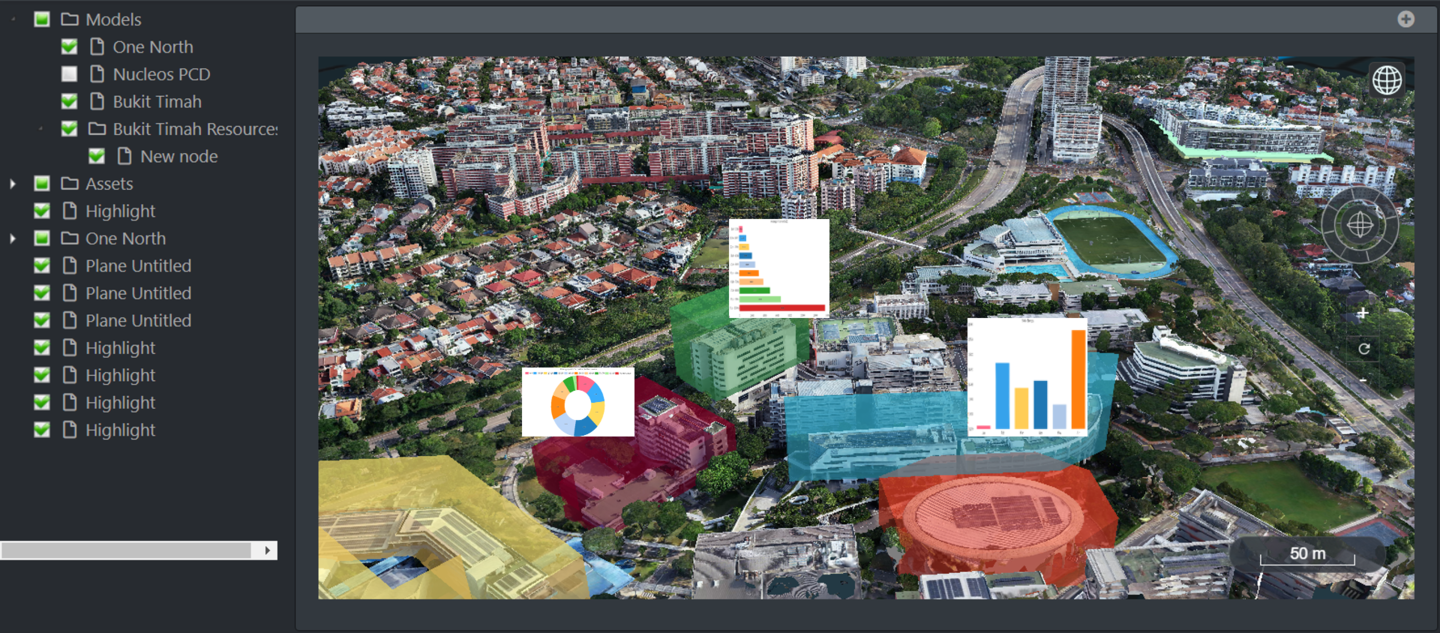OiER as the UN Charter Centre of Excellence for Smart and Sustainable Cities is joining efforts with the leading tech-business partner Graffiquo. The partnership will be focusing on the challenges of supporting local authorities and providing visual intelligence for decision making.
Organizations and governments that will benefit include various sectors ranging from local council management, road and highways, environmental assessment, asset management and maintenance, heritage and conservation as well as property development as to name a few.
Today, around 55 percent of the world’s population are living in an urban area or city, with that figure set to rise to 68 percent over the coming decade, according to UN reports. Although multiple challenges are taking its toll on cities, it’s critical to understand how it actually impacts of global urban challenges, their change over time and how technology can support these transformations towards a positive development – both effective and sustainable, to increase the quality of life for all its citizens.
Some of the most daunting challenging issues that are facing cities today are also the most complex. That’s where science, data, and visualizations play a part to provide solutions supporting governments and decision-makers giving them access to sophisticated tools.
The joint vision of Graffiquo and the Excellence Centre is to provide solutions to a myriad of industries ranging from Smart Cities, to Environmental Impact and Assessment, and, Asset Inspection of Energy and Communications Infrastructure.
Graffiquo integrates information from multiple connected devices and sensors as well as aggregating information from multiple application and business solutions to be displayed on a unified 3D geospatial intelligence platform.
“While basic visualization techniques are becoming canonized, the competition illustrates that there is still a lot of room for experimentation and innovation, we want to use to provide effective services for decision makers to save, time, money and efforts on a sustainable scale” Kari Aina EIK, Secretary General OiER and Director of the United for Smart Sustainable Cities Implementation Programme.
How can cities, businesses and individuals create value from the volume of data collected?
Furthermore, how can organizations increase it grasp of complex concepts and questions?
The answer may lie in the twin concepts of visual intelligence and Photo Realistic 3D Georeferenced Platforms.
Visual Intelligence
The difference between making precise decisions and blunt ones, is embedded in quality of information used as benchmarks upon which the decisions are based. Timely, relevant, and well-articulated data can guide decision making. Messy and incomprehensible data can stymie innovation and undermine both confidence and trust. Today, in many local governments as well as businesses, decisions are being made based on data that is redundant or incomplete, because there’s no easy way to extrapolate data and share the findings in a timely and beneficial manner.
In that field, Graffiquo developed a process that provides information visualization technology to address these challenges of discovering and leveraging information. This visual intelligence application is aimed to improve the decision-making capabilities of city administrations by performing spatial and multivariate visual data analysis, as well as providing rapid access to comprehensible information.
Through its technology, Graffiquo creates the ability to sight. The solution makes it possible for other stakeholders to see the positives and the negatives, the opportunity, the invention, the upsides, the warning signs, the quickest way, the way out, the win within their current challenges.
3D Georeferenced Platform
Three-dimensional (3-D) photorealistic visualization is one of the most important functionalities in geospatial information system (GIS). Such 3D georeferenced platform is able to provide geospatial information for easy human perception. It is helpful in geospatial information interpretation and the decision-making process. Through the past years, many successful models have been developed to represent different typical geospatial features such as terrain, road, water body, vegetation and many others.
An effective geometric modeling approach in urban areas is needed to model the spatial location and the topology of buildings. In addition, this model should also be extended to include other information for buildings, such as attributes and image textures for the purpose of query and visualization.

Using these images as textures will not only increase the realism of the model but also enable the viewing of intricate details. It also improves the interpretability; in other words, the relationship between objects can be perceived easily and reliably when photorealistic models are used as visualization.
Despite geospatial information systems are widely used in many different fields as a powerful tool for spatial analysis and decision-making, their capabilities are limited in handling realistic 3-D urban environments.
Through the collaboration, the two partners, a platform to visualize 3D business applications from different departments, organizations and agencies will be offered.
Stakeholders within the urban framework will be able to capture real representation of land, assets and objects down to measurable precision of centimeters as well as to capture changes over time by providing a visual audit history. This proposed multimodal tool of Graffiquo provides both a fast and low-cost solution.
The objective of this work is to integrate the recent developments in 3-D modeling and visualization into GIS to enhance its 3-D capabilities. Through the tool, the partners can simplify viewing, managing and analyzing complex information in a photo realistic 3D georeferenced platform that can be accessed on any device, anytime and anywhere.
“The good news is that mapping and visualization is becoming increasingly accessible, through the Graffiquo platform. Our tool let people analyse and visualize data without being a software developer or statistician” Seok Mei Goh, CEO, Graffiquo Pte Ltd
Started in April this year (2020), the OiER UN Charter Centre of Excellence together with the Singapore based partner Graffiquo provides a Photo realistic 3D Georeferenced Platform for governments and corporates to support their development activities in the infrastructure and building sector.
To request more information and best practice examples please contact the Secretary General’s office of the OiER or representatives of Graffiquo.
Article Taken From: OiER
